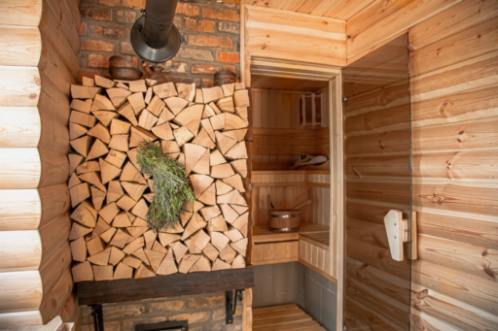Safety Considerations in Ventilation for Wood-Burning Saunas
22 December 2025 by Jaya S.Saunas are a popular feature in many homes, offering relaxation and health benefits to those who use them. However, when it comes to wood-burning saunas, proper ventilation is crucial to ensure the safety of those enjoying a steam session. In this article, we will delve into the importance of understanding carbon monoxide risks, maintaining air quality, implementing best practices, and ensuring safe airflow in your wood-burning sauna. By following these safety considerations, you can enjoy your sauna experience with peace of mind.

Understanding Carbon Monoxide Risks in Sauna Ventilation
In a wood-burning sauna, carbon monoxide can be produced as a byproduct of combustion. When ventilation in a wood-burning sauna is inadequate, carbon monoxide can accumulate to dangerous levels, posing a serious health risk to anyone using the sauna. Carbon monoxide poisoning can lead to symptoms such as dizziness, confusion, nausea, and even death if exposure is prolonged. It is crucial to ensure proper ventilation in a wood-burning sauna to prevent the buildup of carbon monoxide and maintain a safe environment for sauna users. By understanding the risks associated with carbon monoxide in sauna ventilation, individuals can take the necessary precautions to protect themselves and others using the sauna. Proper ventilation design and regular maintenance are essential to minimizing the risk of carbon monoxide exposure and ensuring a safe sauna experience.Tips for Maintaining Air Quality in Wood-Burning Saunas
Maintaining proper air quality in a wood-burning sauna is essential for the health and safety of those using the sauna. Here are some tips to help ensure that the air in your sauna remains clean and safe to breathe:Use high-quality firewood: Choosing dry, seasoned firewood that is free of chemicals and additives can help reduce the amount of harmful emissions produced during the burning process.
Regularly clean the chimney: A dirty or clogged chimney can prevent smoke and other pollutants from properly venting out of the sauna. Make sure to clean the chimney regularly to maintain proper airflow.
Monitor ventilation: Keep an eye on the airflow in your sauna to ensure that there is proper ventilation. If you notice a buildup of smoke or other pollutants, adjust the ventilation settings to improve air quality.
Install a carbon monoxide detector: Carbon monoxide is a dangerous gas that can be produced during the burning of wood. Installing a carbon monoxide detector in your sauna can help alert you to any potential issues with air quality.
Limit sauna usage: To prevent the buildup of pollutants in the air, it is important to limit the amount of time spent in the sauna. Take breaks and allow the sauna to ventilate between uses to ensure that the air quality remains safe. By following these tips, you can help maintain clean and safe air quality in your wood-burning sauna, allowing you to enjoy a relaxing and rejuvenating sauna experience without compromising your health and wellbeing.